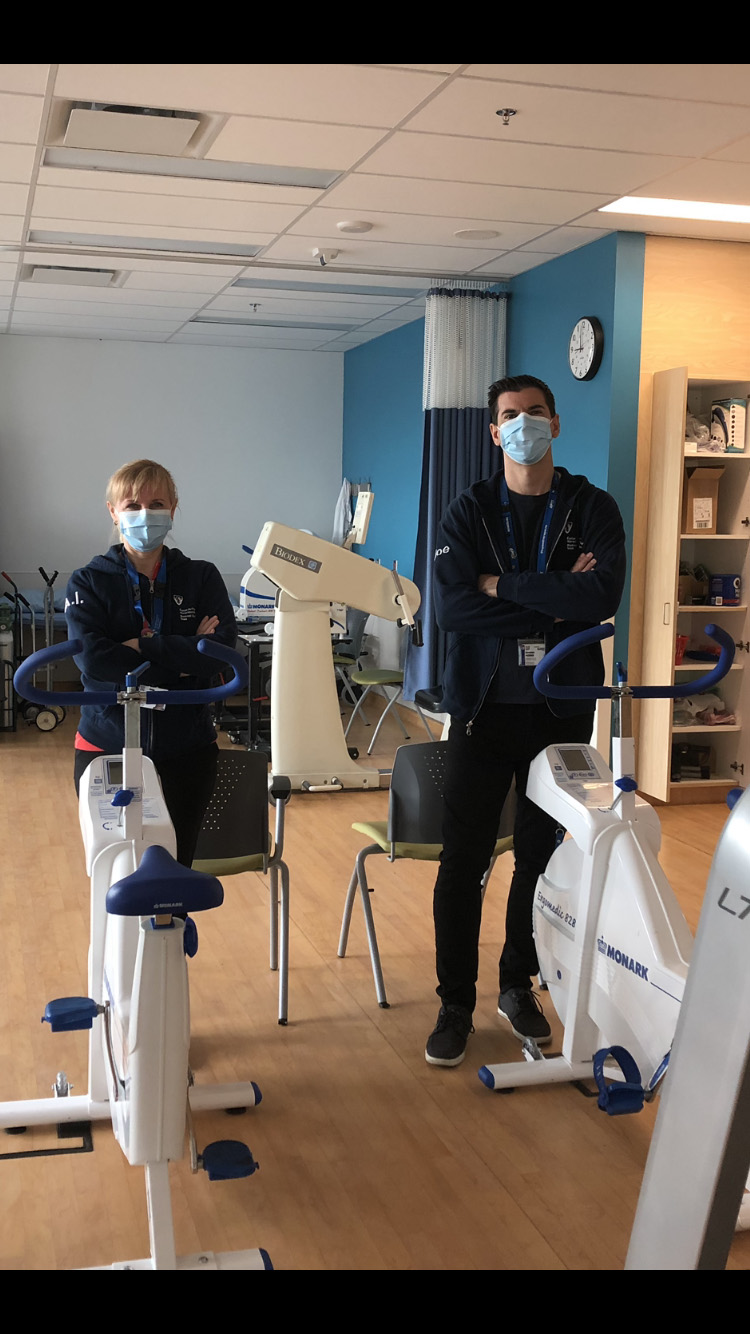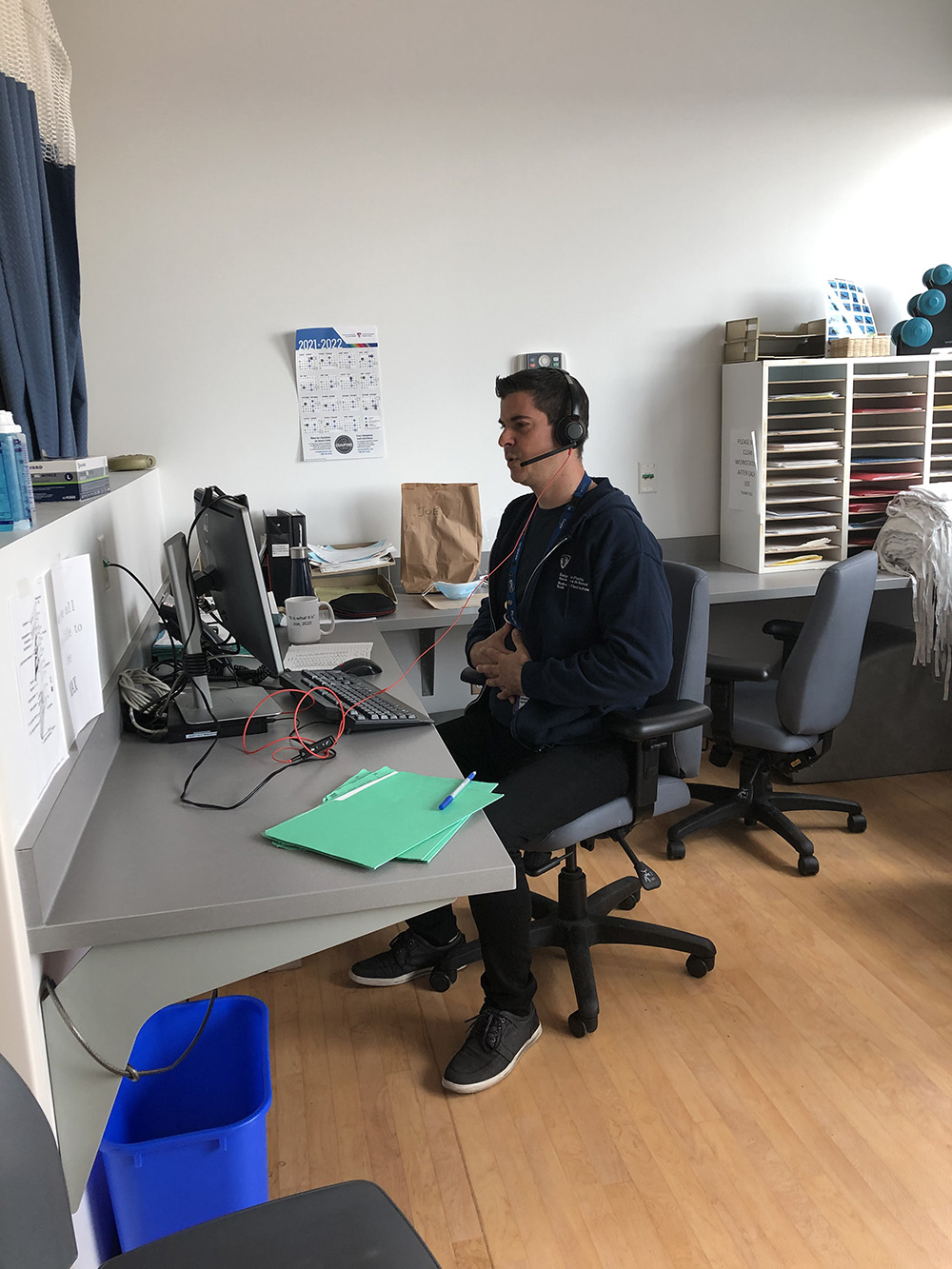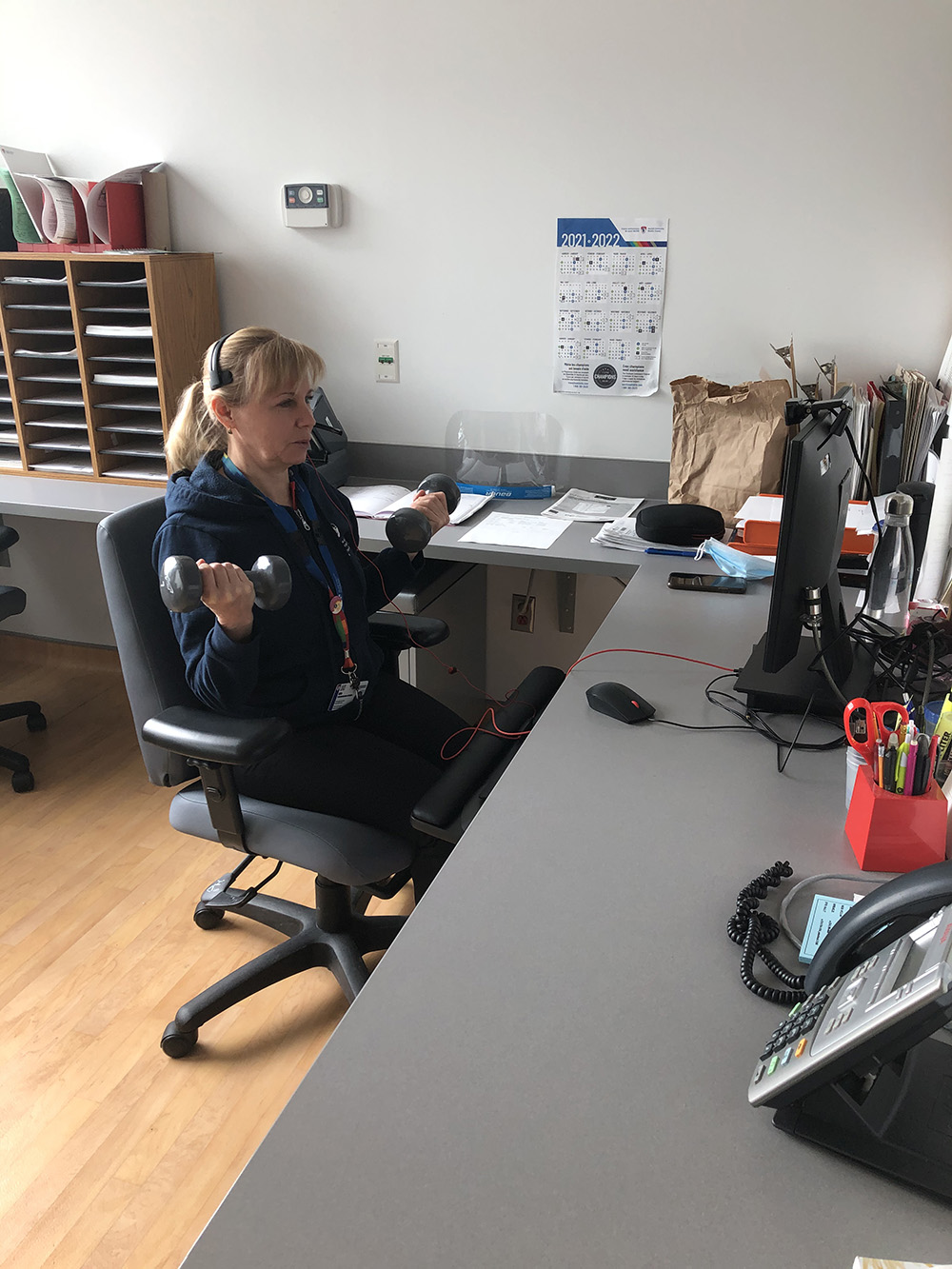Tele-rehab for respiratory patients is here to stay
Since May is physiotherapy month, we reached out to two physiotherapists to learn about how the pandemic significantly changed the way that respiratory rehab programs run.

Physiotherapists Joe Pazienza and Alla Issakova run two outpatient respiratory rehabilitation programs at the Glen site of the McGill University Health Centre (MUHC); the Pulmonary Exercise Program (PEP) and the Pulmonary Alternative Program (PAP). The COVID-19 pandemic significantly changed the way both of these programs had to be run, and after positive results, tele-rehab for respiratory patients is here to stay.
“PEP mainly caters to respiratory patients with chronic obstructive pulmonary disease (COPD), but we also include patients with interstitial lung diseases such as pulmonary fibrosis,” explains Joe, who has worked at the MUHC for 20 years. “It’s a multidisciplinary program that usually runs 3 times a week for 8 weeks, and under normal circumstances, we see patients in groups of 6 to 8.”
Similarly, PAP is designed to help patients who have already been through the PEP program and need a refresher, or who have conditions that need more specialized care. “We used to run group exercise sessions with patients in our gym,” says Alla, who has been at the Montreal Chest Institute for 14 years, and has 18 years of experience with orthopaedic patients.
“Well, that was before COVID—and then everything had to change!”
A New Normal
When COVID hit, sessions stopped and the department was temporarily shut down; that is, until Joe and Alla heard about telehealth and started to think about adapting.
“We had to think carefully about showing the exercises in a safe way while online,” says Joe, who knows how important it is to show patients exactly how to perform exercises for flexibility, strength and endurance to avoid strain or injury. Working diligently with his team, the tele-rehab program was successfully implemented and available to patients online in one-on-one session; similarly, the education sessions were offered virtually to patients in groups.

“After a few months, we were allowed to resume some activities in person, but we decided to keep tele-rehab to minimize visits,” says Joe.

Alla says that tele-rehab has proven to be especially useful for patients who have mobility issues, or simply live far away from the clinic. “One patient told me that tele-rehab had become a strong motivating element in her rehabilitation, and that if it weren’t for those online sessions, she would not be doing the exercises,” says Alla.
Alla also notes the value of seeing patients in their homes and being able to talk with family members thanks to the online technology. “It gives a human touch to what we do,” she says. “I’m so happy when I hear feedback about our patients’ improvements, when they proudly tell us that they’re able to climb the stairs, or just enjoy playing with their grandkids. It truly makes my job special!”

